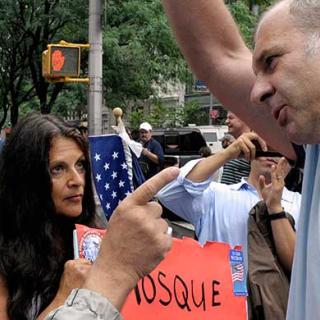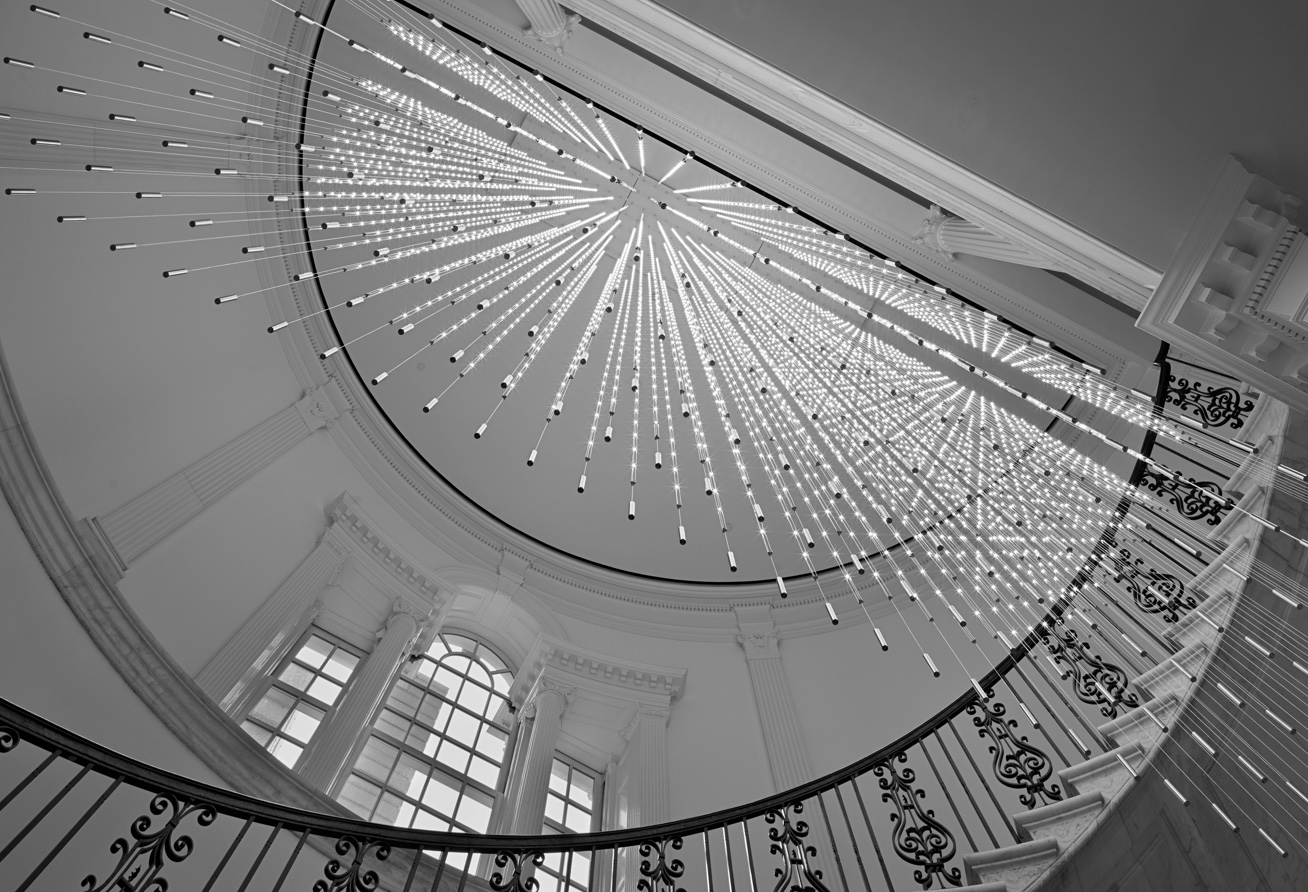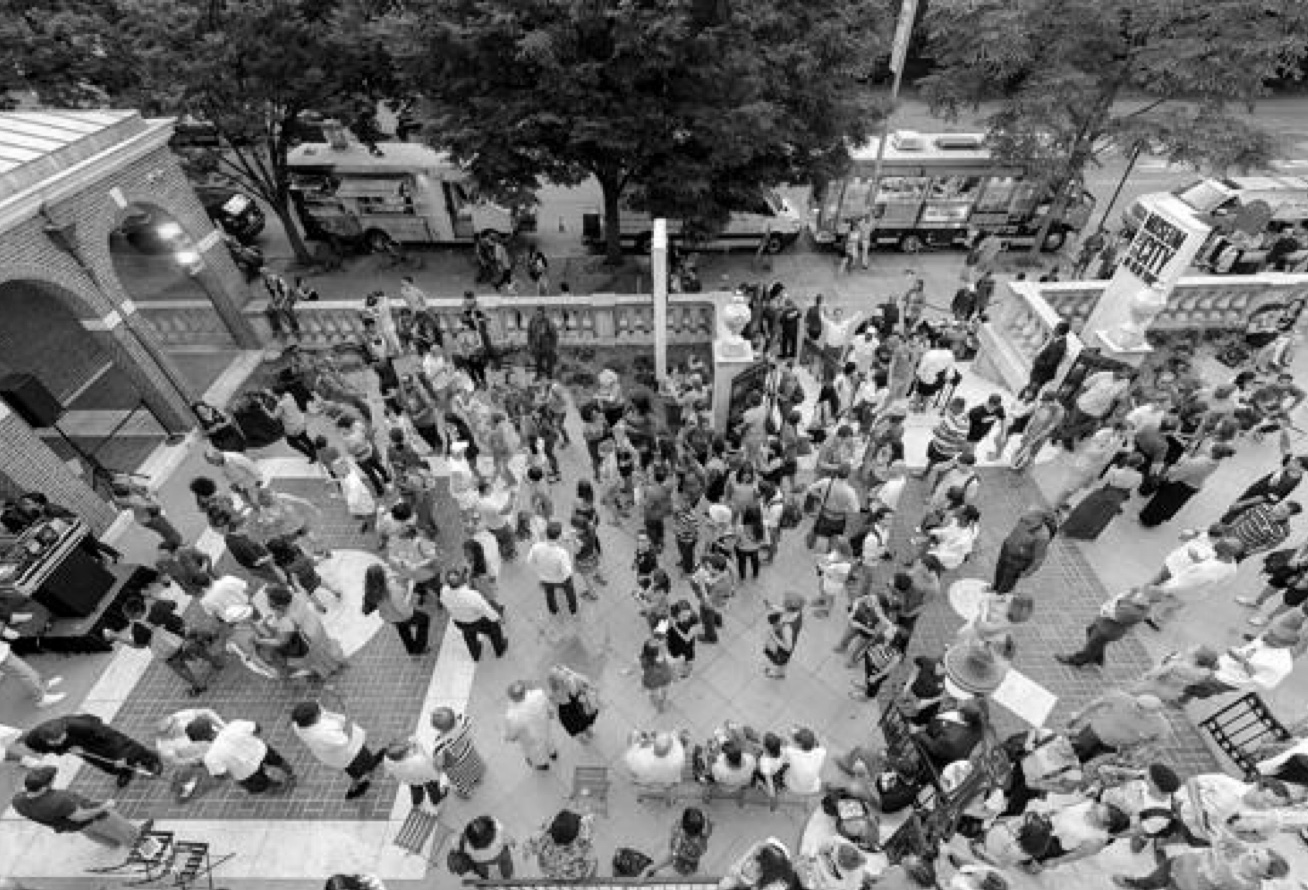Debating Park51
Religious Freedom after 9/11
2010-2015
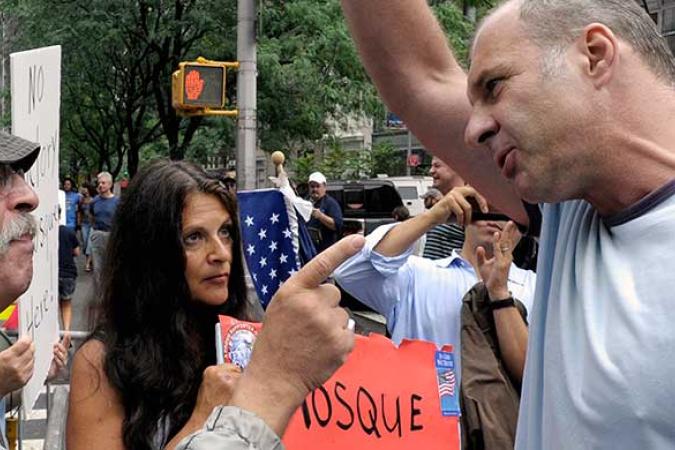
Back to Exhibitions
In 2010, controversy erupted over a plan to build an Islamic Cultural Center on Park Place in Lower Manhattan, two blocks from the devastated World Trade Center site. “Park51,” as proposed by Imam Feisal Abdul Rauf and developer Sharif el-Gamal, sought to promote communication among New Yorkers of diverse faiths and backgrounds.
A small group mobilized against Park51, arguing that constructing an Islamic center near the site of the September 11, 2001, attacks was disrespectful; some claimed it would celebrate terrorists. Anti-Muslim sentiment fueled counter-demonstrations, where protestors invoked longstanding traditions of religious freedom.
Activists on both sides of the debate embraced new tools of 21st-century activism: websites, email blasts, social networks, posted videos, and smartphone snapshots. These new media extended the reach of the city’s activists to the nation and the world, making the dissemination of information and viewpoints instantaneous and the mobilization of opinion, support, and donations as easy as the click of a button.
After opening temporarily in 2011, a new building at the Park51 site, featuring condominiums alongside a museum, cultural center, and sanctuary, is under construction. The Park51 debate has quieted, but questions of cultural diversity and use of urban space remain. Nearly 400 years after Quakers, Jews, and others fought to worship in what was then New Amsterdam, questions of religious tolerance continue to mobilize New Yorkers today.In 2010, controversy erupted over a plan to build an Islamic Cultural Center on Park Place in Lower Manhattan, two blocks from the devastated World Trade Center site. “Park51,” as proposed by Imam Feisal Abdul Rauf and developer Sharif el-Gamal, sought to promote communication among New Yorkers of diverse faiths and backgrounds.
Meet the Activists
Linda Sarsour
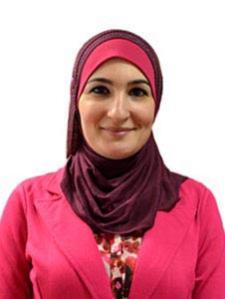
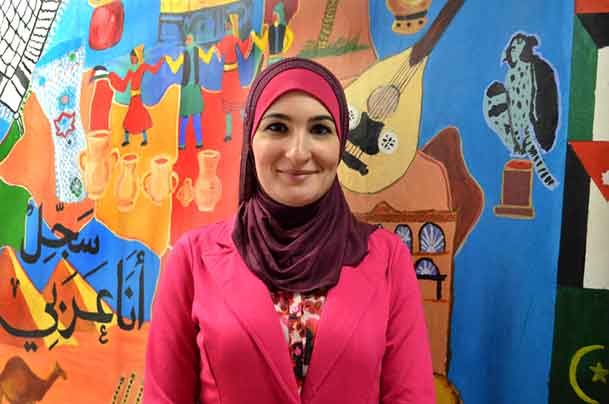
Linda Sarsour
Linda Sarsour is a civil rights and racial justice activist and media commentator, and a Palestinian-American-Muslim born and raised in Brooklyn. Sarsour serves as the Executive Director of the Arab American Association of New York, founded in the aftermath of the September 11 attacks, which fights discrimination against Arab Americans and provides social services to Brooklyn’s Arab-American community. Sarsour is also a frequent media commentator, connecting anti-immigrant and anti-Muslim prejudice with the broader movement for racial equality.
Image Info: Courtesy Arab American Association of New York.
Objects & Images
Graphic Showing Location Of Islamic Community Center Relative To The World Trade Center
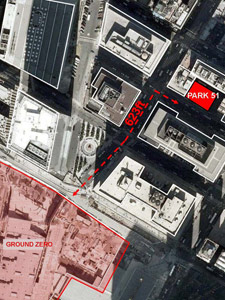
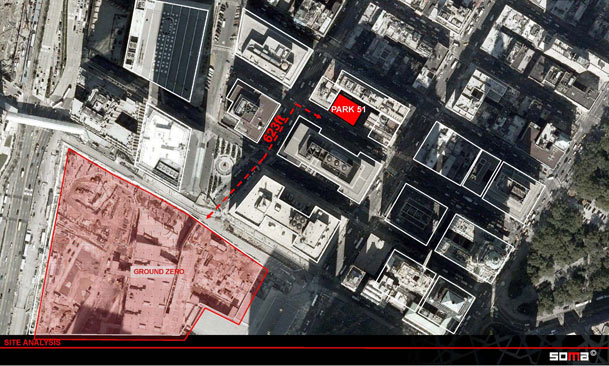
Graphic Showing Location Of Islamic Community Center Relative To The World Trade Center
The plan to build an Islamic Cultural Center in Lower Manhattan led to controversy not only around issues of religious tolerance and cultural diversity, but also use of urban space. The Park51 website used aerial views to demonstrate that the proposed Islamic Community Center would be located two blocks away from the World Trade Center site, not at Ground Zero.
Image Info: Courtesy Park51 Islamic Community Center.
American Pride (new York, Ny)
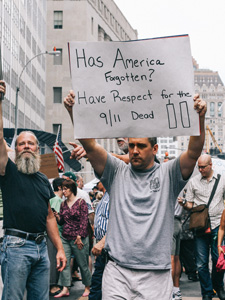
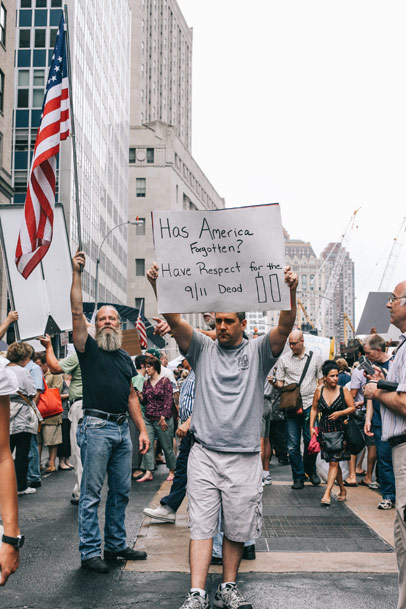
American Pride (new York, Ny)
Some New Yorkers, including family members of September 11 victims and workers at the Ground Zero construction site, argued that constructing a center devoted to Islam close to the scene of the September 11 attacks was insensitive.
Image Info: August 22, 2010, Courtesy Connie Tsang.
Flyer, “Do You Want A Mosque At Ground Zero?”
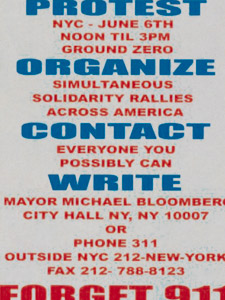
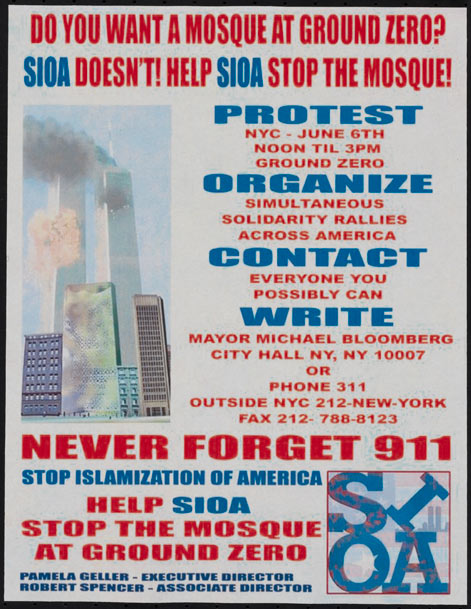
Flyer, “Do You Want A Mosque At Ground Zero?”
In addition to producing flyers, posters, T-shirts, and stickers to generate support for their positions, anti-Park51 activist groups such as Stop Islamization of America used the Internet to disseminate downloadable flyers that criticized the decision to build an Islamic Community Center near Ground Zero and tenets of Islam in general.
Image Info: Stop Islamization of America, 2010.
International Action Center Members Mobilize In A Counter Demonstration Against Anti-mosque Protesters
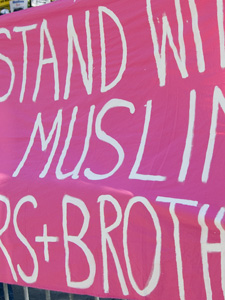
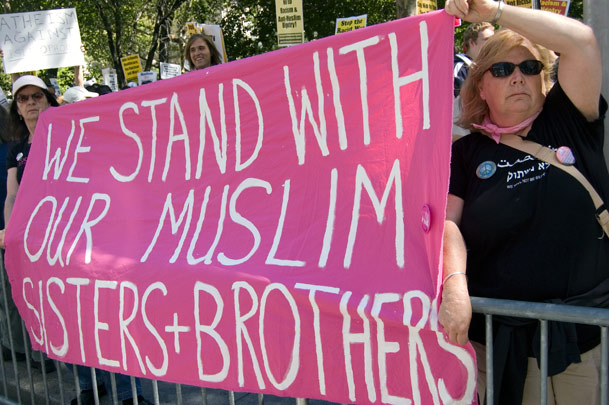
International Action Center Members Mobilize In A Counter Demonstration Against Anti-mosque Protesters
The International Action Center, founded in New York in 1992, was one of several groups that organized counter-protests to the Park51 protestors, maintaining the right for a mosque near ground zero to exist and proclaiming solidarity more broadly with Muslim-Americans.
Image Info: September 11, 2010, Courtesy Michael Sullivan.
Bilingual Postcard, “Say No To Racism And Anti-muslim Bigotry”
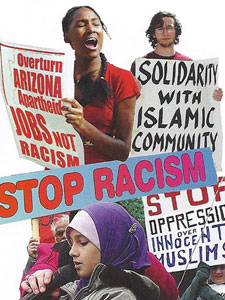
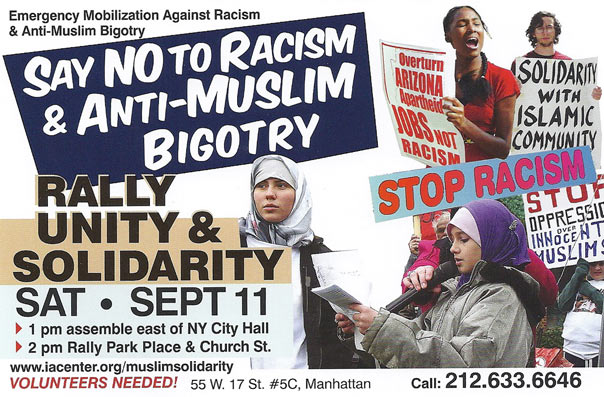
Bilingual Postcard, “Say No To Racism And Anti-muslim Bigotry”
Activist groups who opposed the Park51 critics distributed an array of flyers and handbills on September 11, 2010, in Lower Manhattan, decrying what they viewed as bigotry against Muslims, as well as denouncing the decision of a Florida pastor to burn copies of the Quran that day.
Image Info: 2010-2011, Collection of Steven H. Jaffe.
Two Men Debate The Proposed Islamic Community Center In Downtown Manhattan
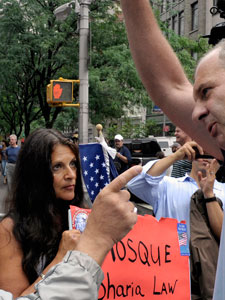
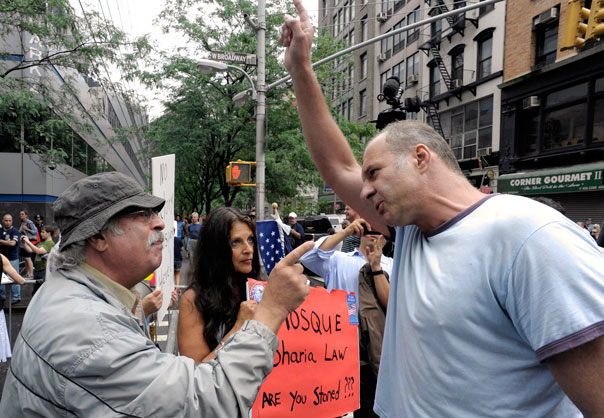
Two Men Debate The Proposed Islamic Community Center In Downtown Manhattan
Activists who mobilized against the proposed mosque and cultural center employed traditional media-seeking tactics, including holding press conferences, issuing press releases, and deploying the urban street theater of rallies and marches.
Image Info: September 11, 2010, ©PETER FOLEY/european press agency.
Flyer For Nyc Coalition To Stop Islamophobia
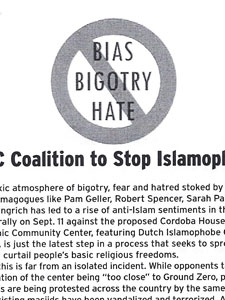
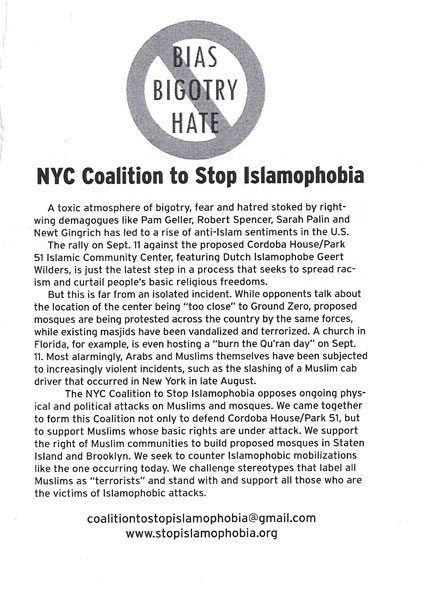
Flyer For Nyc Coalition To Stop Islamophobia
Groups such as NYC Coalition to Stop Islamophobia and September 11th Families for Peaceful Tomorrows connected the debate around Park51 with the broader climate after September 11, 2001. In the years following the 9/11 attacks, cases of verbal and physical assault against Muslim Americans or those perceived as such increased in New York and across the country.
Image Info: NYC Coalition to Stop Islamophobia, 2010-2011.
Islam Has Been In New York For 400 Years
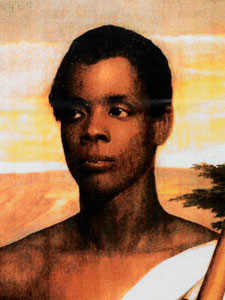
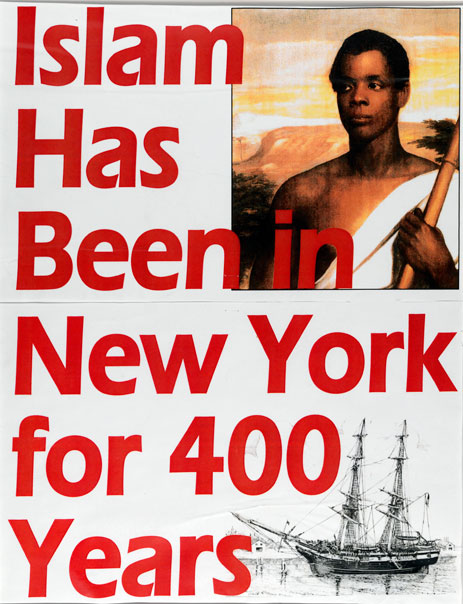
Islam Has Been In New York For 400 Years
On the ninth anniversary of the World Trade Center attack, demonstrators in Lower Manhattan carried this placard underscoring the long history of Islam in New York City. The placard features a portrait of Joseph Cinque (Sengbe Pieh), leader of the rebellion on board the slave ship Amistad off the Long Island coast in 1839.
Image Info: 2010, Courtesy New York State Museum, Albany, New York.
Flyer, “Say Yes To Walmart”

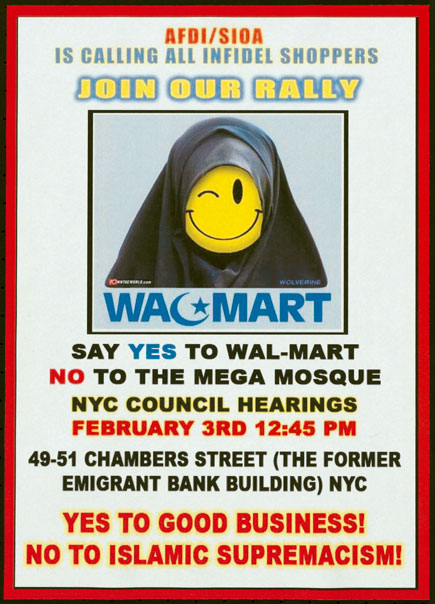
Flyer, “Say Yes To Walmart”
The debate over Park51 coincided with another local debate, concerning the company Walmart’s efforts to expand into New York City. After the New York City Council opposed the retailer’s plan, citing poor labor conditions and the impact on small businesses, Opponents to the construction of Park51 attacked the New York City government’s willingness to support the proposed Islamic cultural center while barring a business that they argued would provide jobs and resources for the city.
Image Info: 2010, AFDI/SIOA.
Arab American Association Of New York Flyer
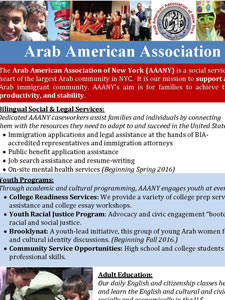
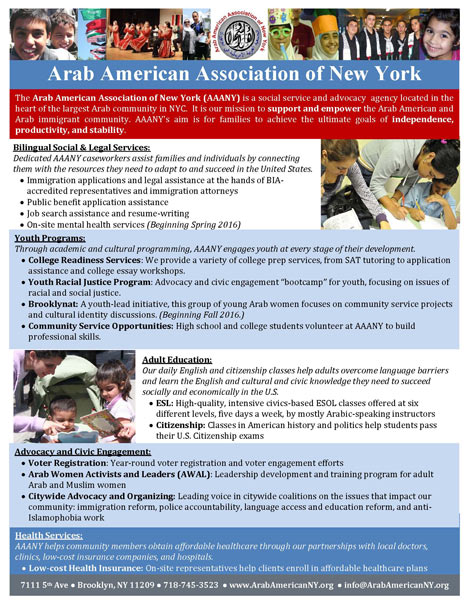
Arab American Association Of New York Flyer
Although the controversy around the Islamic cultural center and mosque at 51 Park Place has largely subsided, groups such as the Arab American Association of New York continue to mobilize against Islamophobia. The Brooklyn-based Arab American Association of New York also provides a range of social services, including voter registration, language services, and healthcare resources, to the city’s Arab-American communities.
Image Info: Arab American Association of New York, 2016.
Key Events
| Global | Year | Local |
|---|---|---|
| Federal Hart-Celler Act opens America’s doors to new immigrants of all faiths and from all parts of the world | 1965 | |
| Arab-American Anti-Discrimination Committee founded in Washington, DC | 1980 |
|
| 1993 | First World Trade Center bombing by militant Islamists kills six, injures over 1,000 | |
|
Beginning of war in Afghanistan Iraq War begins amidst antiwar protests Al Qaeda attacks destroy the World Trade Center, as well as target the Pentagon and another Washington site; 2,819 killed |
2001 |
Arab American Association of New York founded in Brooklyn |
| 2009 | Plans announced to build Islamic Cultural Center at 51 Park Place |
